Mysterious Number Three by Paeony Lewis
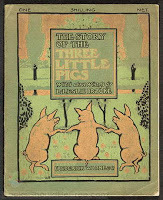 What is it about the number three in storytelling? There are traditional tales such as The Three Little Pigs, Three Billy Goats Gruff, Goldilocks and the Three Bears. Then there are the lesser-known tales: The Three Sillies, The Devil with the Three Golden Hairs, The Three Snake Leaves, and so many more.
What is it about the number three in storytelling? There are traditional tales such as The Three Little Pigs, Three Billy Goats Gruff, Goldilocks and the Three Bears. Then there are the lesser-known tales: The Three Sillies, The Devil with the Three Golden Hairs, The Three Snake Leaves, and so many more.Even if three isn’t in the title, three still sneaks into countless fairy stories. Rumpelstiltskin gives the miller’s daughter three spinning wishes and she has three guesses at his name. Cinderella goes to three balls and there are three sisters. Jack steals three treasures from the giant at the top of the beanstalk.
 How about contemporary picture books? That number three sneaks in again. There are three owls in Martin Waddell’s classic Owl Babies. Whilst in the deep dark wood a little mouse meets three animals (a fox, owl and snake) in Julia Donaldson’s The Gruffalo. And I've just realised I have three young bunnies in Hurry Up, Birthday.
How about contemporary picture books? That number three sneaks in again. There are three owls in Martin Waddell’s classic Owl Babies. Whilst in the deep dark wood a little mouse meets three animals (a fox, owl and snake) in Julia Donaldson’s The Gruffalo. And I've just realised I have three young bunnies in Hurry Up, Birthday.Even if there aren’t three characters, then things happen three times. Winnie the Witch waves her wand again, and again and again . Helen Cooper’s Bear Under the Stairs is fed one day with bananas, bacon and bread. Another day it’s hazelnuts haddock and honey. And the door is always shut with a wham, bang and thump.
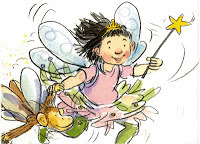 From No More BiscuitsSo why three? Why, in writing, is it called The Rule of Three or Magic Three? Perhaps because three times is a pattern. Two can be a coincidence, but three is something more. It’s more satisfying. It’s the beginning, middle and end. It flows and has rhythm.
From No More BiscuitsSo why three? Why, in writing, is it called The Rule of Three or Magic Three? Perhaps because three times is a pattern. Two can be a coincidence, but three is something more. It’s more satisfying. It’s the beginning, middle and end. It flows and has rhythm.If a fairy casts one spell and it doesn’t succeed, then you’re setting up tension. If she casts the spell again and it succeeds, then it feels a bit of an anti-climax. But if she fails a second time, things are getting tenser. Will she succeed on the third attempt? We hold our breath… Yes! Ah ha, but what if she fails again, surely the tension will rise further? Maybe, or will it start to get boring?
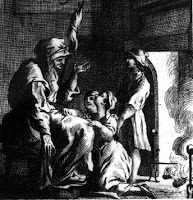
Mind you, sometimes I find the rule of three can be too predictable, especially in films. You just know the hero will try once, twice and then succeed on the third attempt. Yawn. However, perhaps this predictability was helpful when stories were told around the fire, hundreds of years ago. You need a clear story structure to follow a story told orally, and it also helps you to remember it for another night. This might be why three is also popular with stand-up comedians: Three men went into a bar; an Englishman, a Scotsman and an Irishman…
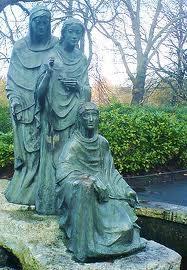 So in storytelling, three can provide a satisfying pattern. Whether it’s the three Norns in Norse mythology; the three Anglo-Saxon monsters battled by Beowulf; or the Greek Three Fates, Graces or Furies. However, it doesn’t stop there.
So in storytelling, three can provide a satisfying pattern. Whether it’s the three Norns in Norse mythology; the three Anglo-Saxon monsters battled by Beowulf; or the Greek Three Fates, Graces or Furies. However, it doesn’t stop there.In art there’s a rule of thirds. Pythagoras called three the perfect number. We also have three primary colours (red, blue and yellow). In Christianity there is the Trinity of the Father, Son and Holy Ghost. On the third day Jesus rose from the dead. In Hinduism you have the Trinity: Brahma, Vishnu, Shiva. Three is our past, present and future. Birth, life and death. Veni, vidi, vici. Symbolic three is everywhere.
In our writing, is it lucky three? Other numbers are endowed with symbolism, although three does appear to be particularly popular in Western writing. So should we use it in our picture books? Why not, if it works? We probably do it subconsciously. But if we use it too much, will the magic of three wane?
1 2 3 1 2 3 1 2 3
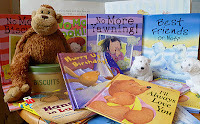 Paeony Lewis is a children's author.
Paeony Lewis is a children's author.http://www.paeonylewis.com/
Published on April 14, 2012 00:00
No comments have been added yet.



